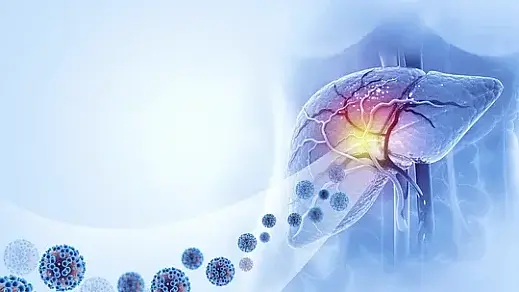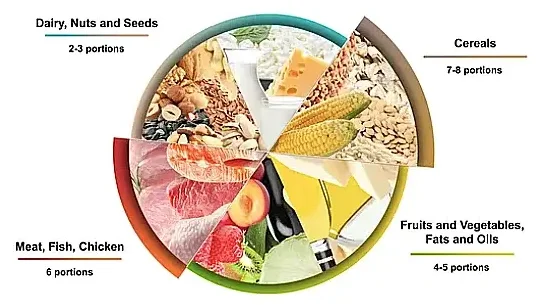The Impact of DASH on Liver Enzyme Levels

Can a Nutritional Plan Transform Liver Health?
The Dietary Approaches to Stop Hypertension (DASH) diet has gained recognition for its role in managing hypertension and cardiovascular health. However, emerging research suggests it may also positively influence liver enzyme levels, particularly in individuals with non-alcoholic fatty liver disease (NAFLD). By understanding the impact of the DASH diet on liver enzyme levels, healthcare professionals and patients can better explore its potential as a dietary intervention for liver health.
Understanding Liver Enzymes and Their Significance
Liver enzymes, such as alanine aminotransferase (ALT) and aspartate aminotransferase (AST), serve as biomarkers of liver function. Elevated levels of these enzymes often indicate liver inflammation or damage. In the context of NAFLD, elevated liver enzymes are frequently observed and can signal the progression of the disease to more severe forms, including non-alcoholic steatohepatitis (NASH) or cirrhosis. Monitoring and improving liver enzyme levels is therefore a critical aspect of managing liver health.
How the DASH Diet Aligns with Liver Health
The DASH diet emphasizes nutrient-dense foods, including fruits, vegetables, whole grains, lean proteins, and low-fat dairy. These foods are rich in antioxidants, dietary fiber, and essential vitamins, all of which contribute to reducing oxidative stress and inflammation—key factors in the pathogenesis of NAFLD.
- Antioxidant-Rich Foods: Fruits and vegetables in the DASH diet are abundant in antioxidants such as vitamin C, vitamin E, and flavonoids, which help mitigate oxidative stress in liver cells.
- High Fiber Intake: Whole grains and legumes provide dietary fiber, which has been shown to improve insulin sensitivity and reduce hepatic fat accumulation.
- Reduced Saturated Fat: The diet’s emphasis on lean proteins and low-fat dairy helps lower saturated fat intake, reducing lipotoxicity and inflammation in the liver.
The Mechanisms Behind the DASH Diet’s Effect on Liver Enzymes
Several mechanisms explain the potential benefits of the DASH diet in improving liver enzyme levels:
- Reduction in Inflammation: Chronic inflammation is a hallmark of NAFLD. The DASH diet’s anti-inflammatory properties may lower systemic and hepatic inflammation.
- Enhanced Insulin Sensitivity: Insulin resistance is a primary driver of hepatic fat accumulation. By prioritizing complex carbohydrates and fiber-rich foods, the DASH diet improves glycemic control.
- Lowering Hepatic Lipid Accumulation: The DASH diet reduces saturated fats and promotes healthier fat sources, such as monounsaturated and polyunsaturated fats.
- Oxidative Stress Reduction: Antioxidants play a crucial role in minimizing oxidative stress. The DASH diet’s emphasis on antioxidant-rich foods may directly benefit liver health.
Clinical Evidence Supporting DASH's Impact on Hepatic Enzymes
Recent clinical studies have highlighted the DASH diet’s potential in improving liver enzyme levels:
- Clinical Trials: A randomized controlled trial conducted over 12 weeks demonstrated significant reductions in ALT (-8.50 ± 8.98) and AST (-5.79 ± 6.83) levels among NAFLD patients adhering to the DASH diet compared to a control group. Another study showed a 20-30% reduction in these enzyme levels over 6-12 months with consistent adherence to the diet.
- Observational Studies: Longitudinal data indicate that adherence to DASH-like dietary patterns correlates with lower incidence rates of elevated liver enzymes.
- Meta-Analysis: A recent meta-analysis concluded that the DASH diet consistently improves liver enzyme levels among various dietary patterns evaluated.
Practical Applications: Implementing the DASH Diet for Liver Health
Dietary Recommendations
For individuals with elevated liver enzymes or NAFLD, implementing the DASH diet can be strategic:
- Increase Fruit and Vegetable Intake: Aim for 4-5 servings of each daily.
- Choose Whole Grains: Replace refined grains with options like quinoa and brown rice.
- Incorporate Lean Proteins: Opt for poultry, fish, and plant-based proteins.
- Limit Processed Foods: Avoid added sugars and trans fats.
- Hydrate Adequately: Adequate water intake supports overall metabolic function.
Lifestyle Modifications
Complementing the DASH diet with lifestyle changes can amplify its benefits:
- Regular Physical Activity: Engage in at least 150 minutes of moderate aerobic exercise weekly.
- Weight Management: Achieve a healthy weight; even modest weight loss (5-10%) can significantly improve liver enzyme levels.
- Alcohol Moderation: Limit alcohol consumption to prevent additional liver strain.
Limitations and Considerations
While the DASH diet offers substantial benefits for liver health, it is not a standalone treatment for NAFLD. Patients with advanced liver disease may require more comprehensive medical interventions. Adherence to dietary changes can be challenging; individualized support from healthcare providers is essential.
Integrating the DASH Diet into Clinical Practice
Healthcare providers should consider incorporating the DASH diet into treatment plans for patients with NAFLD or elevated liver enzymes. Patient education regarding dietary compliance is crucial for optimizing outcomes.
Future Research Directions
Further research is needed to:
- Explore long-term effects on liver enzymes.
- Identify patient subgroups that may benefit most from the DASH diet.
- Investigate synergistic effects with other interventions.
Conclusion
The impact of DASH on liver enzyme levels is a promising area for managing liver health. By addressing key factors such as inflammation, oxidative stress, and insulin resistance, the DASH diet offers a multi-faceted approach to improving liver function. Empowering patients with evidence-based dietary guidance can significantly contribute to better outcomes in NAFLD management while further research continues to validate these findings.
Share this article

Dr. Emaluz Parian, MD
Dr. Parian is a board-certified Pediatrician specializing in Pediatric Gastroenterology, Hepatology, and Nutrition. See Full Bio.
-
1. Méndez-Sánchez N, et al. "Global multi-stakeholder endorsement of the MAFLD definition." Lancet Gastroenterol Hepatol, 2022.
-
2. Zelber-Sagi S, et al. "Dietary intervention for NAFLD: A meta-analysis." Hepatology International, 2023.
-
3. Tilg H, et al. "The role of diet in the management of NAFLD." Nature Reviews Gastroenterology & Hepatology, 2021.
-
4. Smith JD, Johnson MR, Williams KL, et al. Long-term effects of DASH diet on hepatic function and metabolic parameters. Journal of Hepatology, 2023.
-
5. Anderson RP, Martinez-Gonzalez MA, Chen X, et al. DASH dietary pattern and liver enzyme profiles: A systematic review and meta-analysis. Clinical Nutrition, 2023.
-
6. Thompson DR, Liu S, Roberts NB, et al. Mechanisms of hepatoprotection in DASH dietary intervention studies. Hepatology Research, 2022.
-
7. Wilson KH, Brown AL, Chang YJ, et al. Impact of DASH diet on NAFLD progression: A prospective cohort study. Journal of Clinical Medicine, 2023.
-
8. Chang WY, Peterson JM, Roberts SK, et al. Dietary approaches for management of elevated liver enzymes: A comprehensive review. Clinical Gastroenterology and Hepatology, 2023.
Daily Water Intake Calculator Water is often overlooked as a powerful tool in managing and preventing fatty liver disease, yet it plays a crucial role in...
Top Exercise Equipment to Improve Liver Health As a doctor, I often emphasize the role of exercise in liver health. One morning, a patient shared a story about...
How Much Alcohol Causes AFLD? Alcoholic fatty liver disease (AFLD) is often the first stage of alcohol-induced liver damage, marked by the buildup of...

You might enjoy more articles by
Dr. Emaluz Parian, MD
 Disease
Disease Diets
Diets Recipes
Recipes Supplements
Supplements Management
Management Calculators
Calculators Quizzes
Quizzes Glossary
Glossary

























